Ahsoka’s first eps impress, with supremely rad lightsaber battles
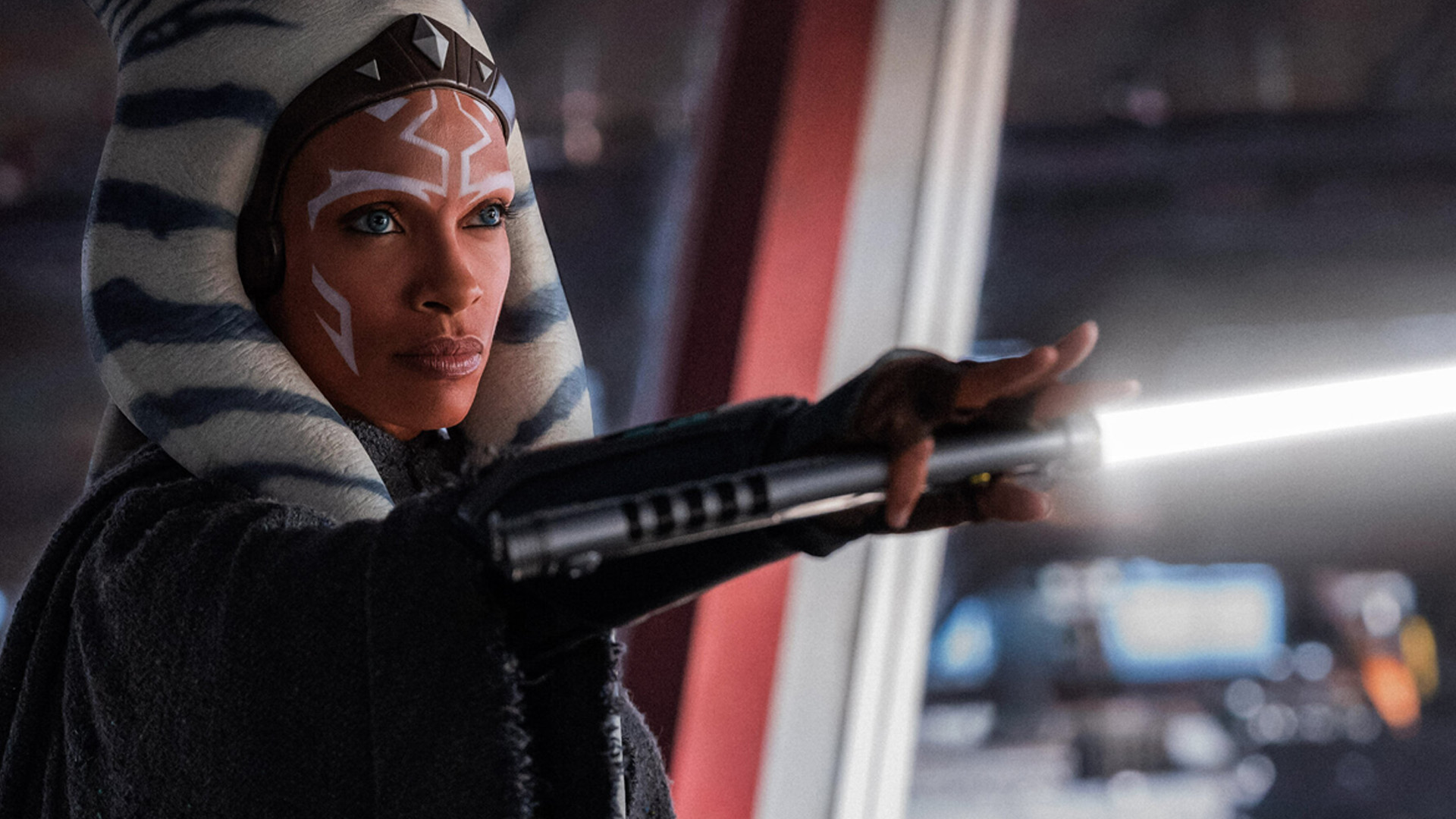
Rosario Dawson reprises the role of Jedi Ahsoka Tano in a new show bearing her character’s name. For Dominic Corry, Ahsoka is a great example of how writer-director Dave Filoni’s work on prior Star Wars animated series brings out the best in Disney’s live action shows.
Every time I write about a live action Star Wars series for Flicks, I go on and on about how Dave Filoni’s achievements with his landmark, prequel-enhancing CGI animated shows Star Wars: The Clone Wars (2008-2020) and Star Wars: Rebels (2014-2018) continue to inform the best aspects of the live action Disney+ efforts.
I will not be deviating from that pattern in this preview/review of Ahsoka, principally because, on some level, it represents the apex of what I have been celebrating this whole time.
Ahsoka Tano is arguably the most important Star Wars character to have never appeared in a movie. Created by Dave Filoni and George Lucas at the outset of Star Wars: The Clone Wars, she was introduced as Anakin Skywalker’s padawan learner. A lot of fans were shocked to discover that Anakin was ever anyone’s master, but like so much of that series, the new addition ultimately only enriched the mythology.
Ahsoka’s long, somewhat tragic arc (you know what happened to her master, right?) was charted throughout the (canonical) two shows (mainly the first one), and the extra space to chronicle it and see her grow up and eventually walk away from the Jedi order has made her one of the franchise’s most explored characters.
An older Ahsoka was brought into the live action Star Wars world in season two of The Mandalorian, played by a perfectly-cast Rosario Dawson (a casting that came about thanks to Dawson retweeting fan art of herself as a the character) and she also showed up in The Book of Boba Fett. But now she has her own show. And Filoni is at the helm. And it is good.
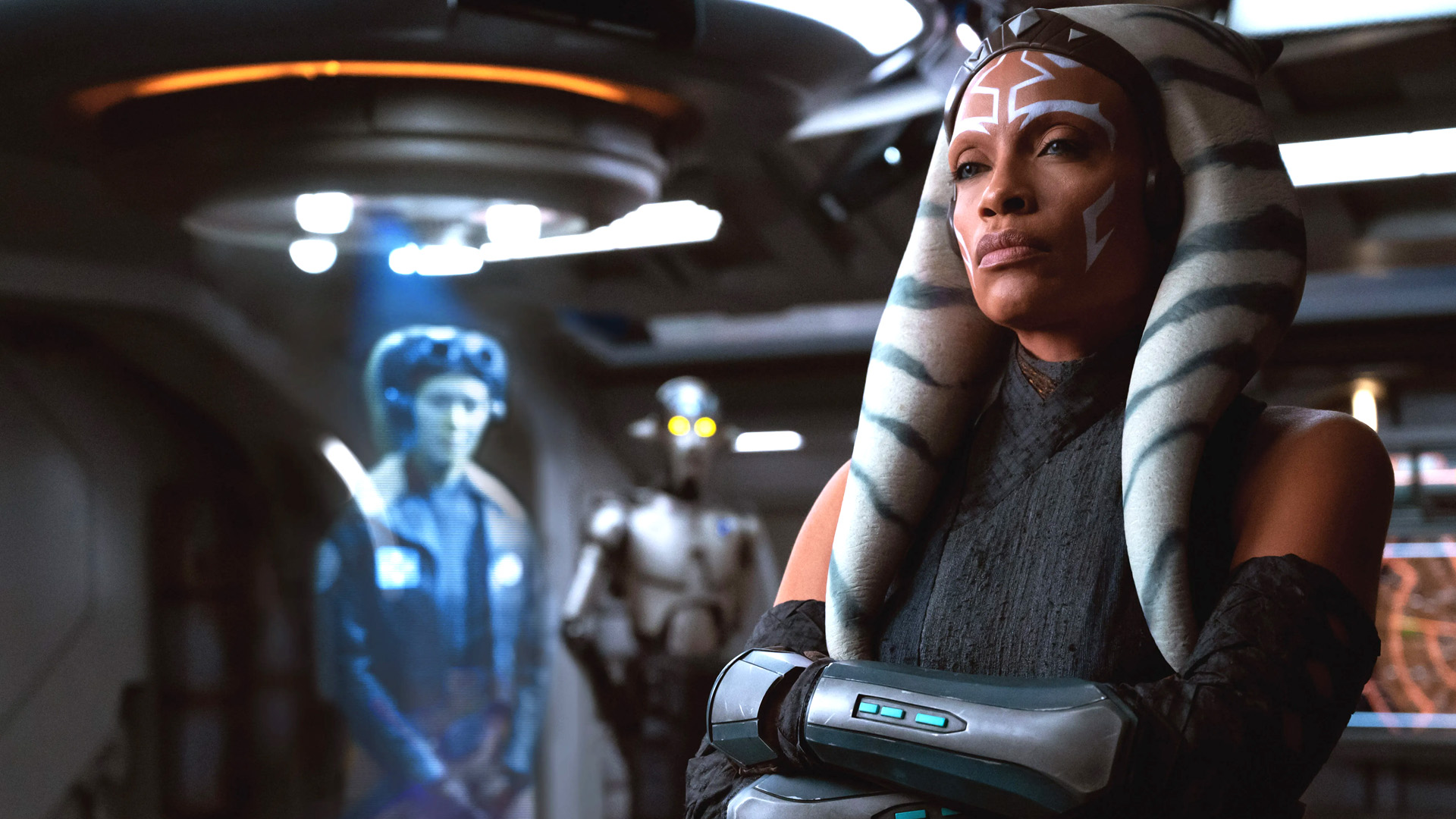
Although Filoni had significant involvement in The Mandalorian, that show appears to be more Jon Favreau’s baby. But Ahsoka is Filoni all over, not just because he is the creator and main writer/director, but also because in addition to centering around his most famous creation, it more or less functions as a live-action sequel series to Star Wars: Rebels.
Taking place in the post-Return of the Jedi New Republic era, the initial plot of Ahsoka (I’ve seen the first two eps) concerns the search for once thought-dead Jedi Ezra Bridger (played in person by Eman Esfandi), who was a main character in Rebels.
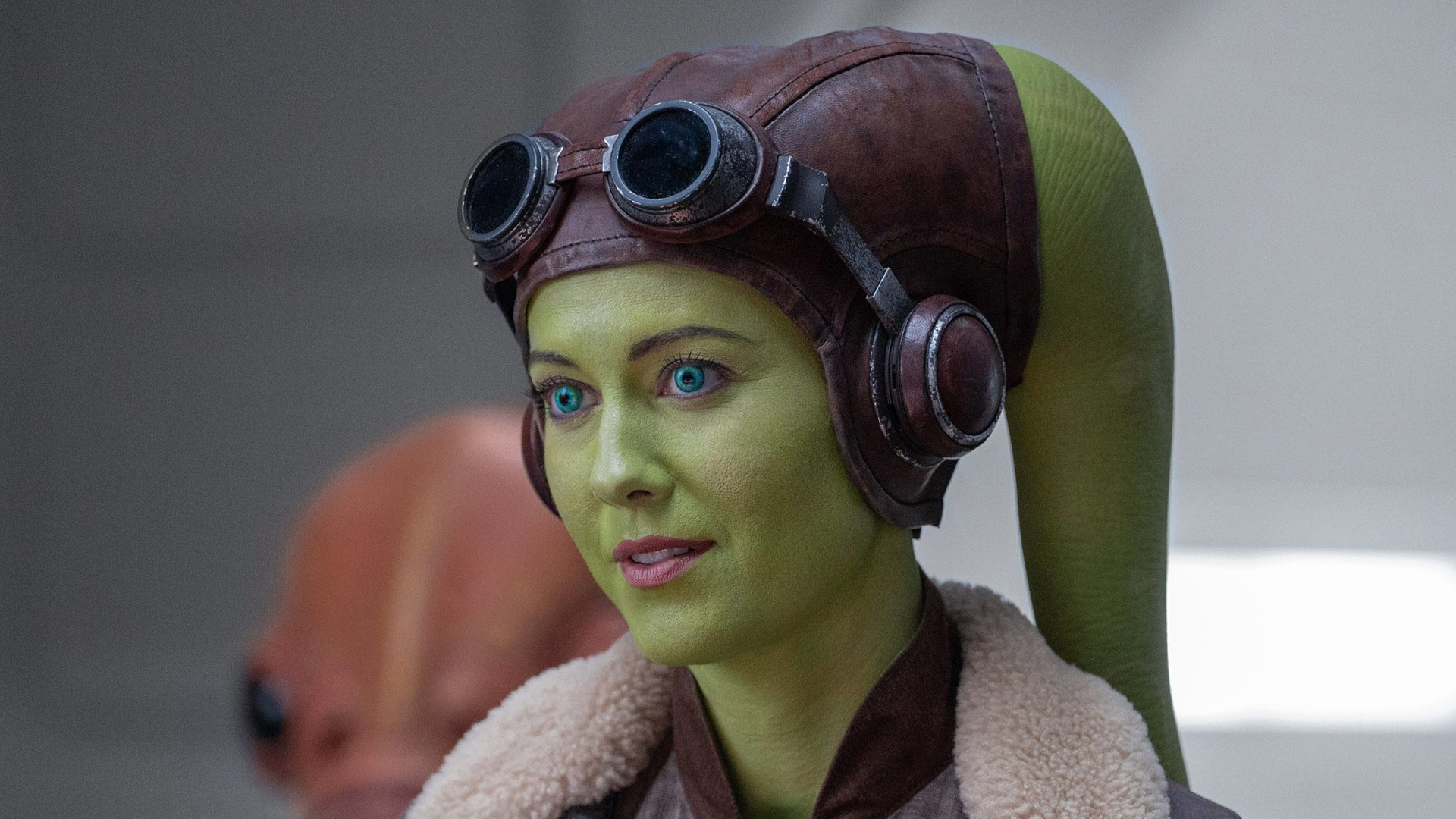
That search is undertaken by Ahsoka, General Hera Syndulla (played in person by Mary Elizabeth Winstead) and Mandalorian firecracker Sabine Wren (played in person by Natasha Liu Bordizzo). Those last two were also main characters in Rebels. So far, we’ve only seen a holo recording of Ezra, but the fact that they announced his live action casting bodes well for him being eventually found.
Throughout the first two eps of Ahsoka, heaps of other Rebels elements show up in live action for the first time (Lothal! Chopper! Governor Azadi, played by Clancy Brown!)—it’s kind of overwhelming. And we haven’t even mentioned Grand Admiral Thrawn yet. An iconic villain of the since-rendered non-canonical Star Wars expanded universe novels (and games), Filoni re-introduced Thrawn into the official canon via Rebels, where he was voiced by Lars Mikkelsen (Rogue One star Mads’ older brother), and his ultimate fate in that show was tied to Ezra’s.
Thrawn, an Empirical loyalist, is due to show up in Ahsoka, where he will be played in person by Mikkelsen, which is pretty cool.
But I’m getting bogged down in lore. Which is something nobody could accuse this series of doing. Although it has an effectively ominous opening (complete with an actual crawl in foreboding red text), it’s thus far impressively light on its feet, brightly-textured, and refreshingly female-focused.
Star Wars has long struggled with serving its female characters well, but the central trio here is made up of distinct individuals who are all cool and interesting in their own ways and have obviously complicated relationships with each other. Which is apparent even if you haven’t seen the earlier shows. If this show is your introduction to Ahsoka, Hera and Sabine, the very existence of their shared back stories can’t help but inform their dynamics with each other.
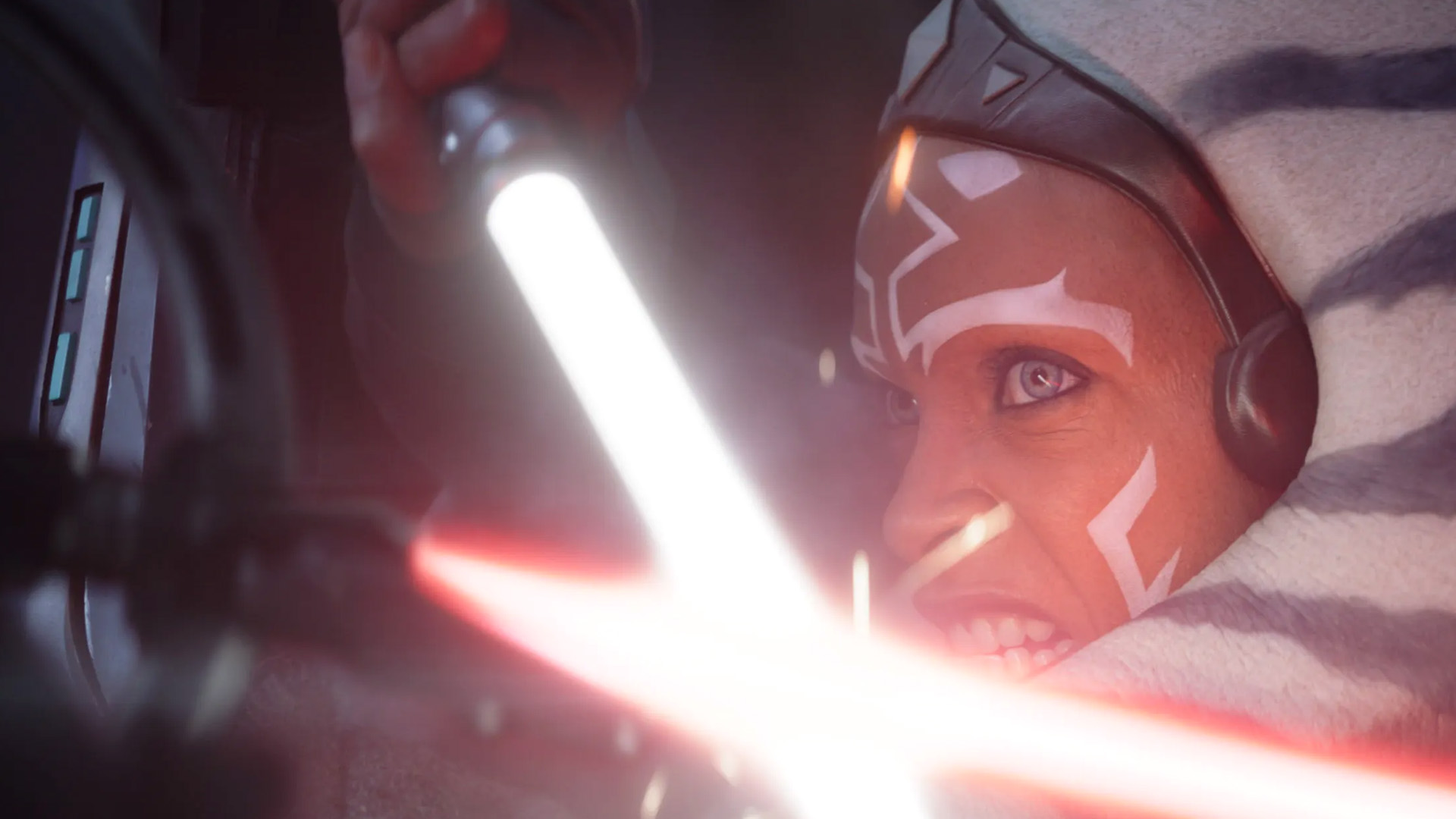
Also: the lightsaber battles here are supremely rad. Although I do miss Ahsoka’s backhanded stance from the animated shows, the fight choreography here is leagues ahead of that seen in the hugely disappointing (and inexplicably Emmy-nominated) Obi-Wan Kenobi series. Filoni notably had no involvement with that show, which was a real bummer as he executed some of the best Obi-Wan stuff ever in The Clone Wars, where Kenobi repeatedly took care of business with minimum fuss and maximum bad-assery. There was none of that in his live action show.
Ahead of this series, I was hoping Filoni would stretch his lightsaber muscles and he looks like he is. Much of that has to do with two mysterious force-wielding characters played by Ray Stevenson and Ivanna Sakhno, both of whom are fantastic. The first episode is dedicated to Stevenson, an under-appreciated genre staple who sadly died in May. His hulking presence brings a lot to this show, and Sakhno has a great presence, too.
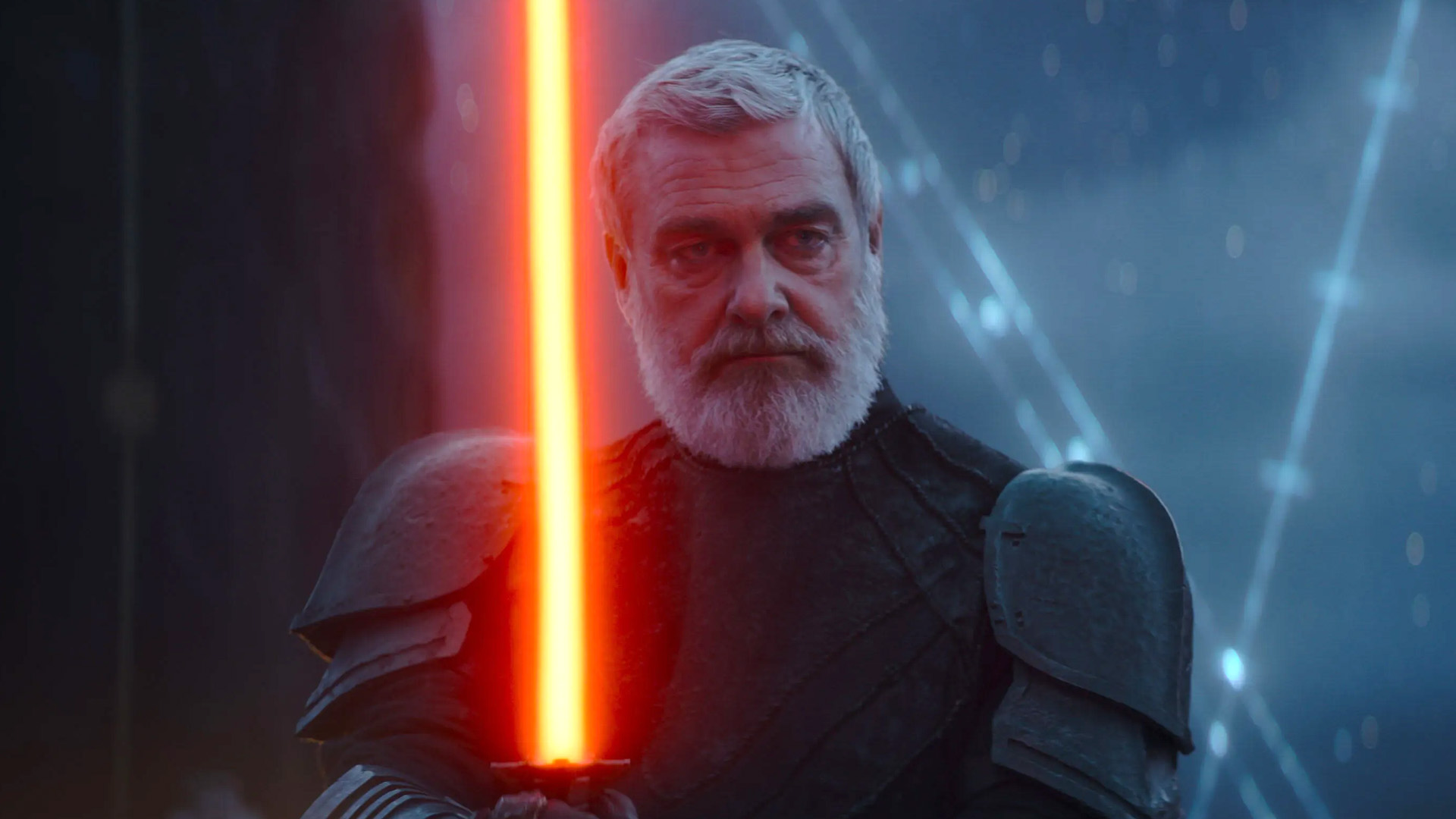
I haven’t really talked about Ahsoka herself much here, she’s more in “getting the crew back together” mode in the first two episodes. But as fans of the CGI shows know, there’s a very deep history to dip into. The trailers have teased Hayden Christensen’s presence, but in Star Wars, that can mean anything.
One of the most amazing moments in Star Wars: Rebels—or indeed in Star Wars as a whole—was when Ahsoka confronted her former master/friend, now fully Darth Vader, in the Jedi temple, and they dueled. You could say they still have unfinished business.
But there are lots of other places Ahsoka, the series and the character, can go. And with Filoni at the helm, I will gladly follow wherever he leads.

















